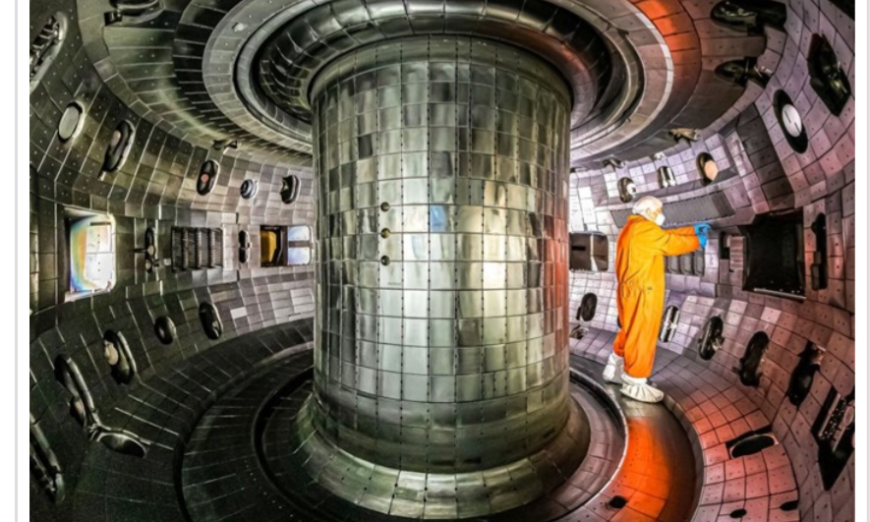Fusion world
DIII-D, ADVANCING FUSION SCIENCE.
DIII-D has been conducting groundbreaking fusion research since the mid-1980s. DIII-D has over 100 participating institutions and a research team of more than 600 users.
In operation since the 1980s, the DIII-D tokamak is the largest magnetic fusion research facility in the United States. Operated by General Atomics for the US Department of Energy, it played an important role in providing data for the engineering design phase of ITER, and continues to work to establish the scientific basis for the optimization of the tokamak approach to fusion energy production.
DIII-D explores a wide range of scientific issues that will help to prepare for ITER operation, including the exploration of the effect that internal stabilization coils have on preventing energy bursts from the plasma edge, the development of high-power microwave transmission line components with low energy losses, and software for controlling the plasma and protecting the ITER machine.
Key achievements of the latest campaign, as reported in a press release from General Atomics, include:
The demonstration of high performance “diverted negative triangularity” plasma configurations, which alter the shape of the plasma to improve performance and heat dissipation and potentially revolutionize the path to cost-effective fusion energy.
The deployment of a new radio-frequency wave injection technology known as “helicon current drive” with an innovative antenna that improves the delivery of energy to the plasma, potentially creating a new method for efficiently sustaining plasmas in a more compact and cost-effective manner.
Significant optimizations to DIII-D’s flexible three-dimensional magnetic field configurations, which improved particle confinement and protections for the plasma-facing walls of the machine.
Findings from these and other areas of research will be announced in upcoming scientific journals and conferences.
A number of upgrades—such as a new divertor system and increased current drive capability—are planned to bring DIII-D to higher performance levels and to enable new research to improve plasma control and efficiency.

